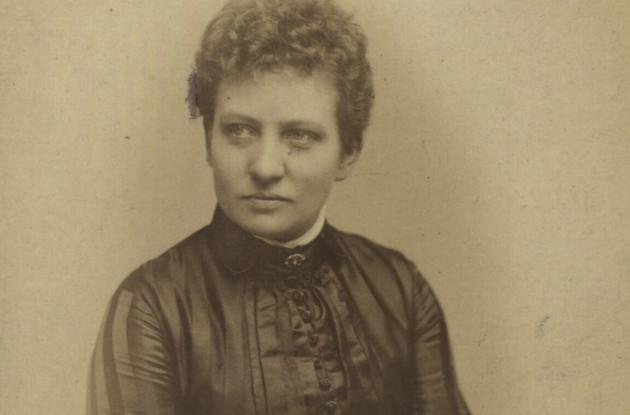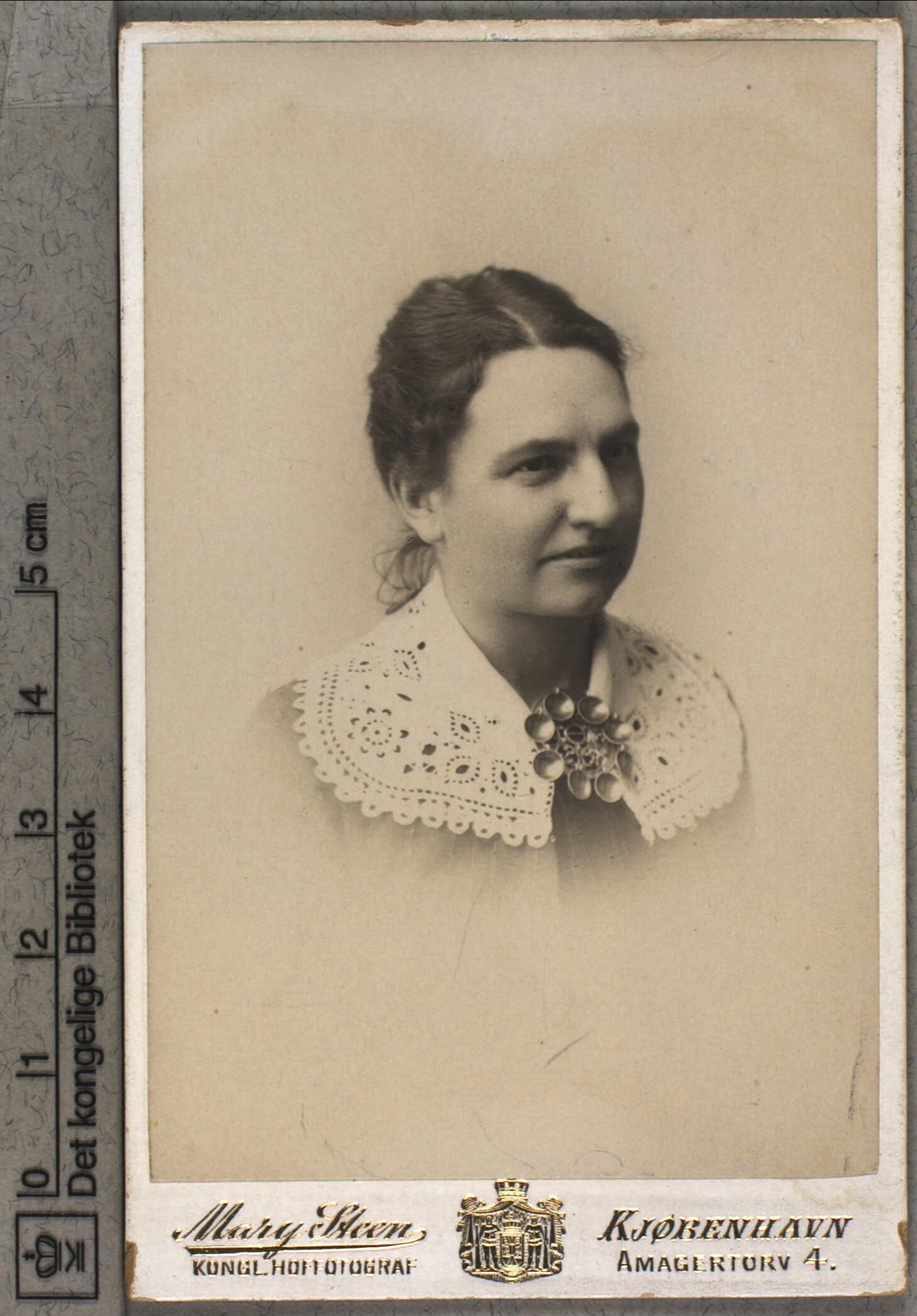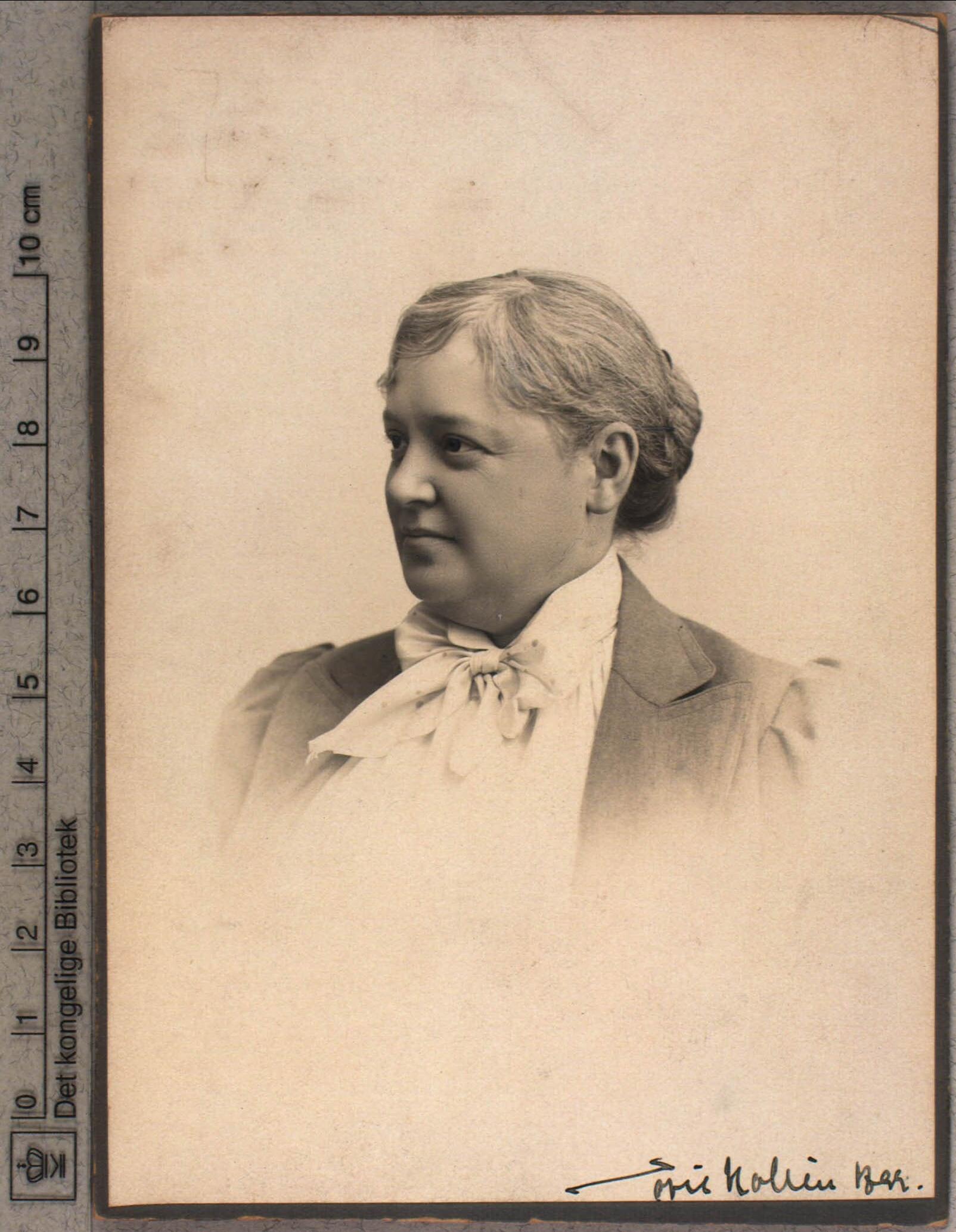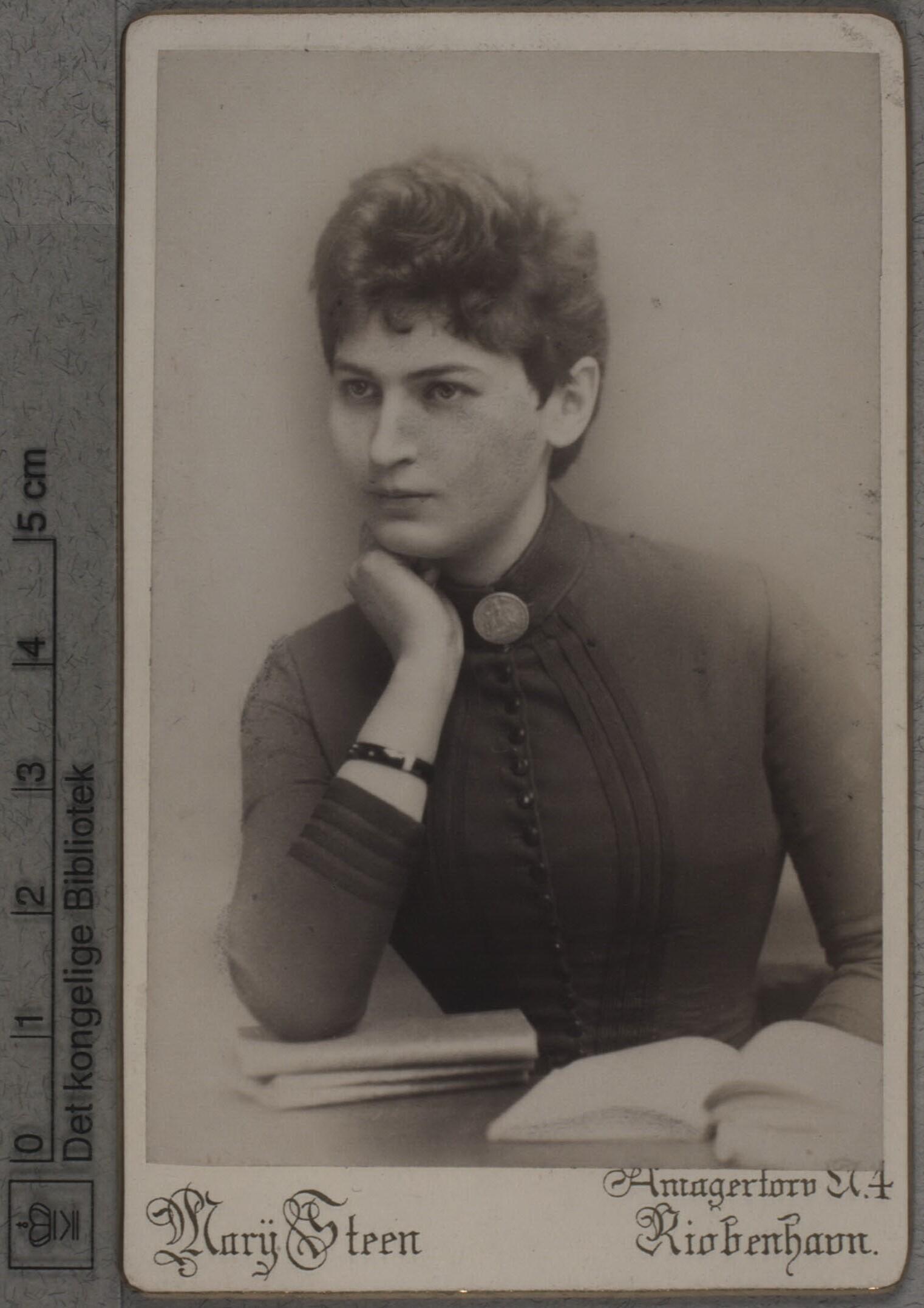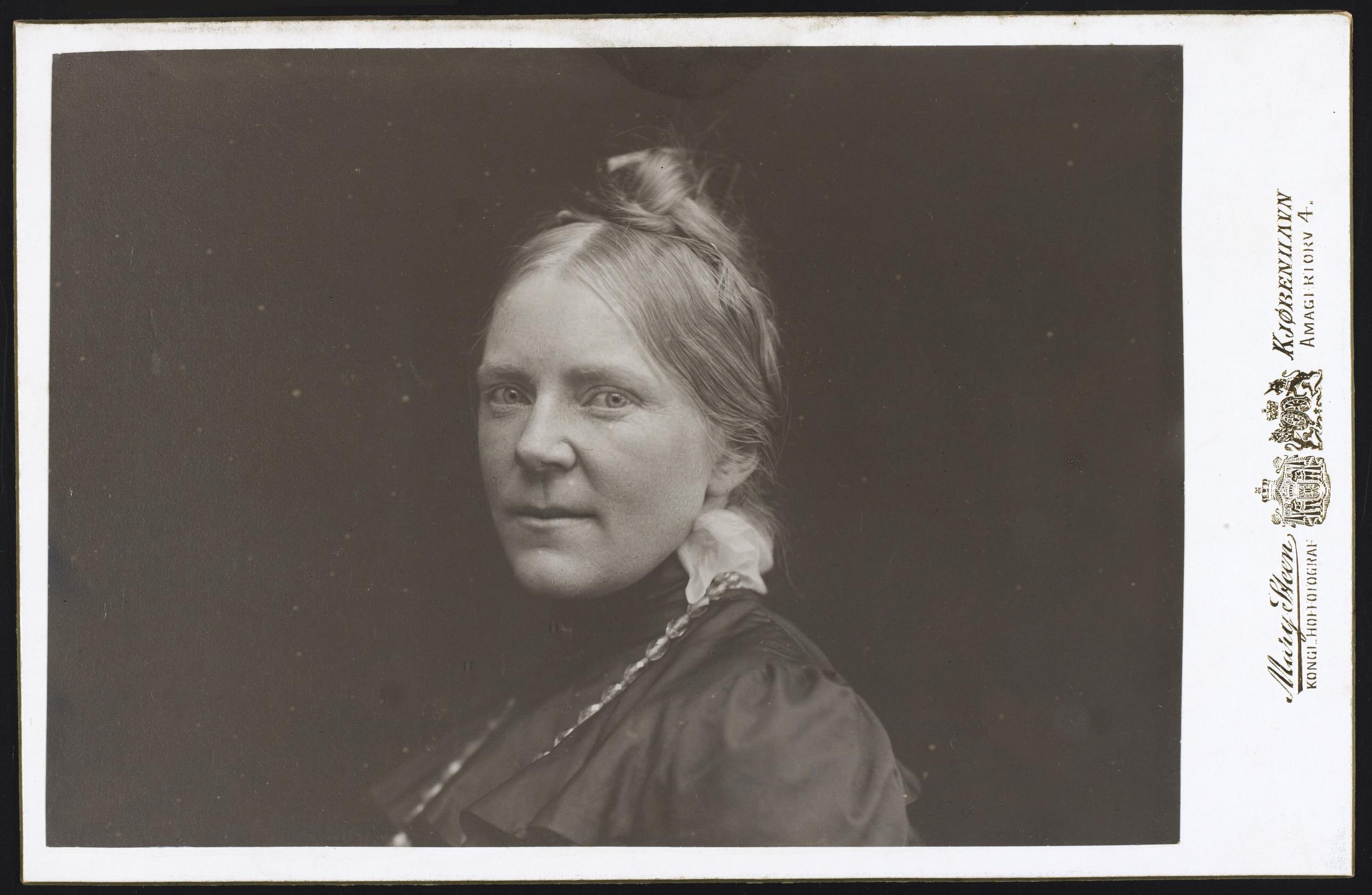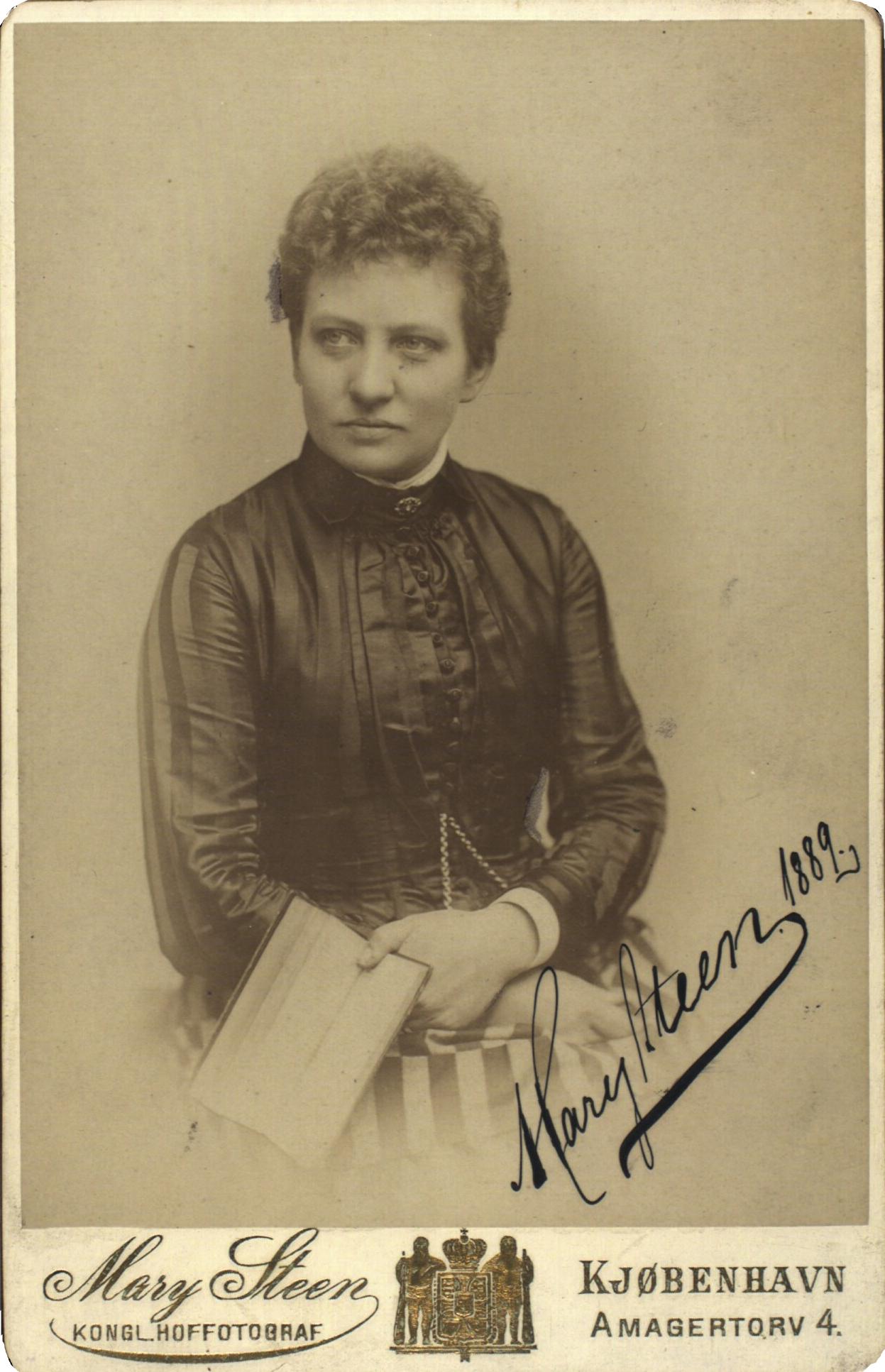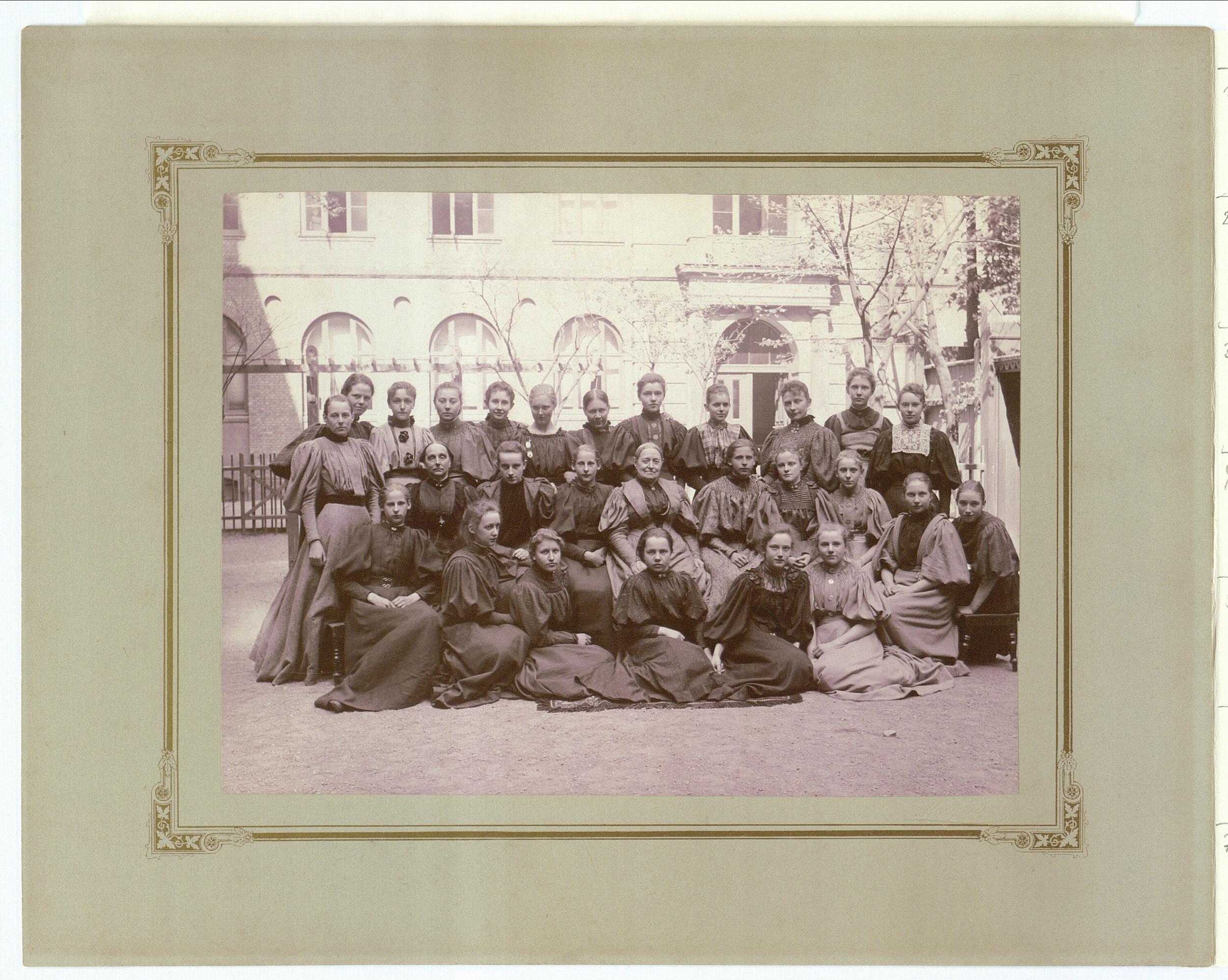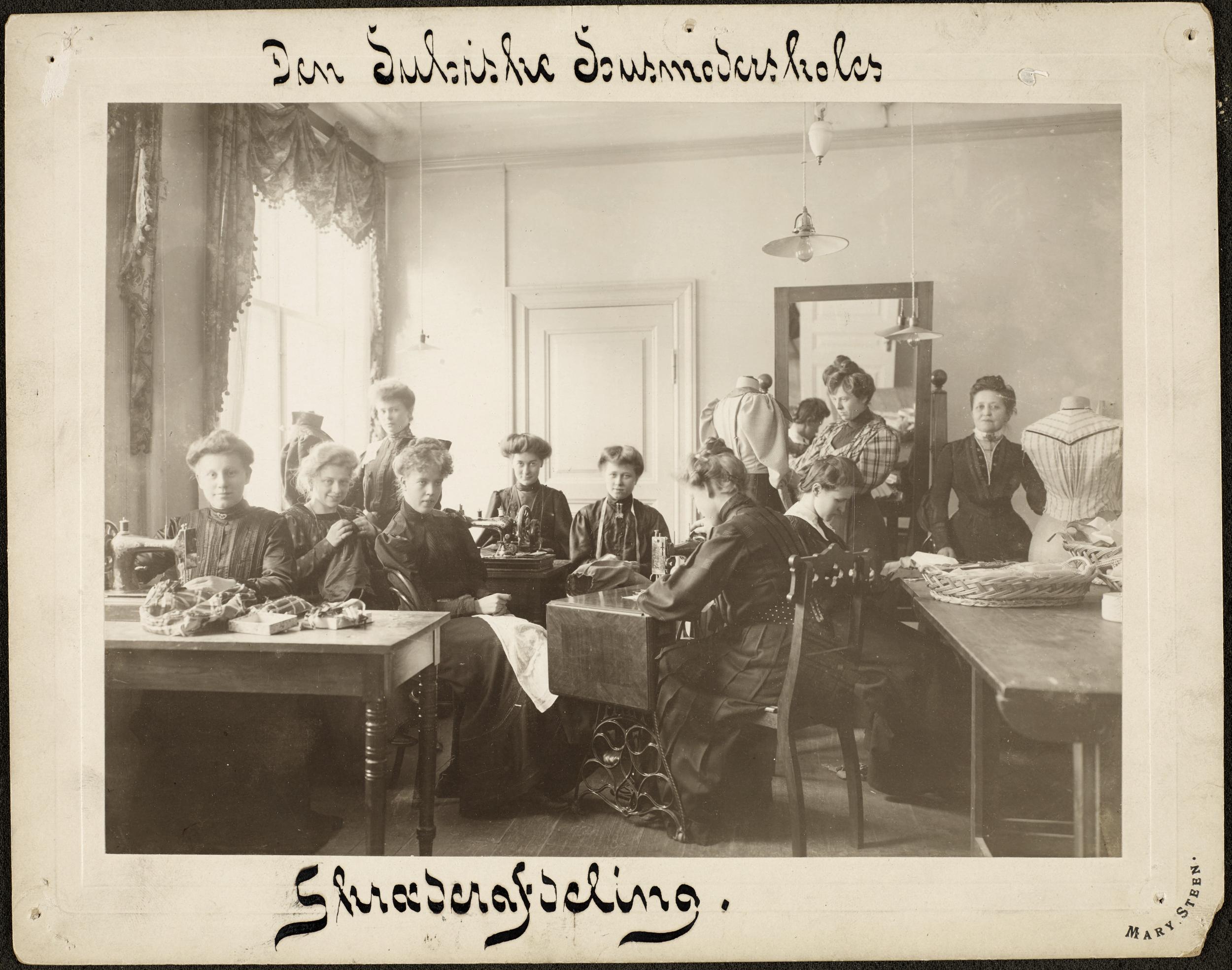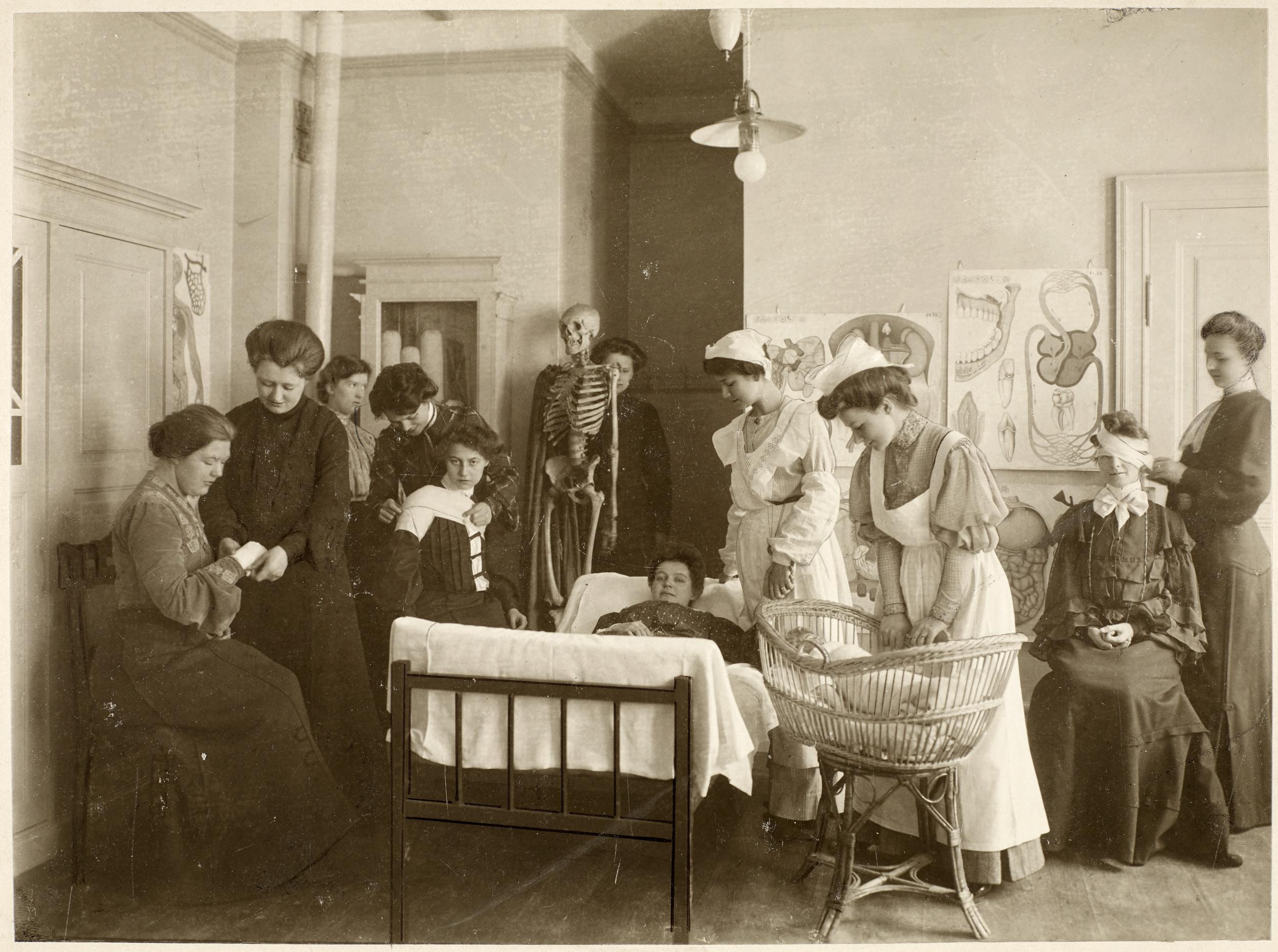Mary Steen
One of Copenhagen's leading female portrait photographers shared her life with a woman. The opportunity to support herself gave her the opportunity to live more freely. Many women made use of this.
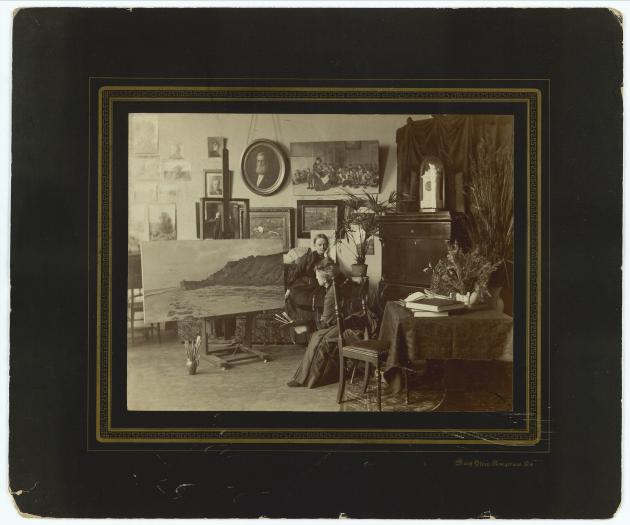
Photo: Mary Steen.
The photographers Mary Steen and Helga Richter lived together at Nørre Søgade 37 in Copenhagen in 1899. This is evident from the censuses. They also worked together in Mary Steen's studio, which was located at Amagertorv 4, and they had a social life with other female couples. For example, Steen and Richter met privately with the painters Emilie Mundt and Marie Luplau at their home at Gl. Kongevej 136.
A women's profession
Mary Steen was not the only female photographer in the city, as the photography profession was populated by women. It began as early as the 1860s, when many women entered portrait photography, which expanded rapidly. They worked in their fathers' or brothers' studios, but over the years they also established themselves as self-employed, after the Trade Act (næringsloven), which was rolled out in 1872, made it possible.
From country to city
The cities grew and attracted workers, and Steen moved from Hvilsager near Randers in the late 1870s. She was an enterprising woman who received an office education at the Business School for Women, established by Caroline Testman in 1872, and then trained as a photographer. In 1884 she opened her studio at the fashionable address in the centre of Copenhagen, which was already packed with photographers.
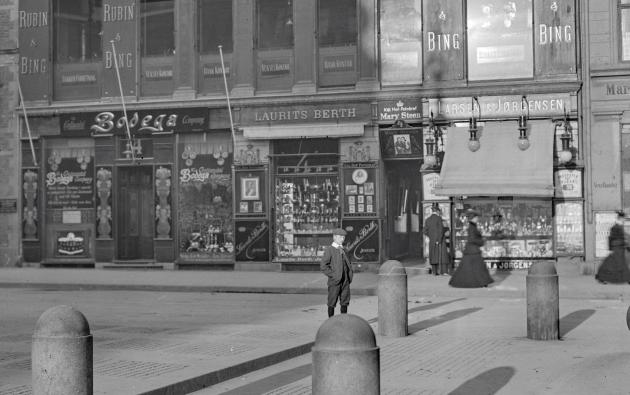
Photo: Peter Elfelt.
In the studio
You had to climb a lot of stairs to be photographed, because the studios were on the 4th floor, where there was enough light for something to stand out on the less light-sensitive negatives of the time. Many people made the trip up to Mary Steen, including the women in their heavy dresses, and they came in through the door and sat in the front room.
There were photographs from the company hanging on the walls, and you could look at them until the studio opened. Under the large skylights there was a backdrop, a chair, and other props like a column with a plant on it.
Painters in front of the lens
Royal Danish Library's portrait collection contains close to a million portraits. They are arranged according to the names of the people portrayed, so it is not easy to get an overview of which people Steen photographed, but the interest in female painters in recent years has brought many to light. The collection shows that many of the prominent artists of the time were photographed by Steen, and it is also likely that she knew several of them personally through her friendship with Mundt and Luplau. Some of them also shared their lives with women.
Behind the studio
Helga Richter worked as a retoucher in the rooms behind the studio, along with other female employees. Some developed negatives and paper prints in the darkroom, others sat by the windows with their heads inside boxes where negatives lay on glass plates and were backlit so they could see the images clearly.
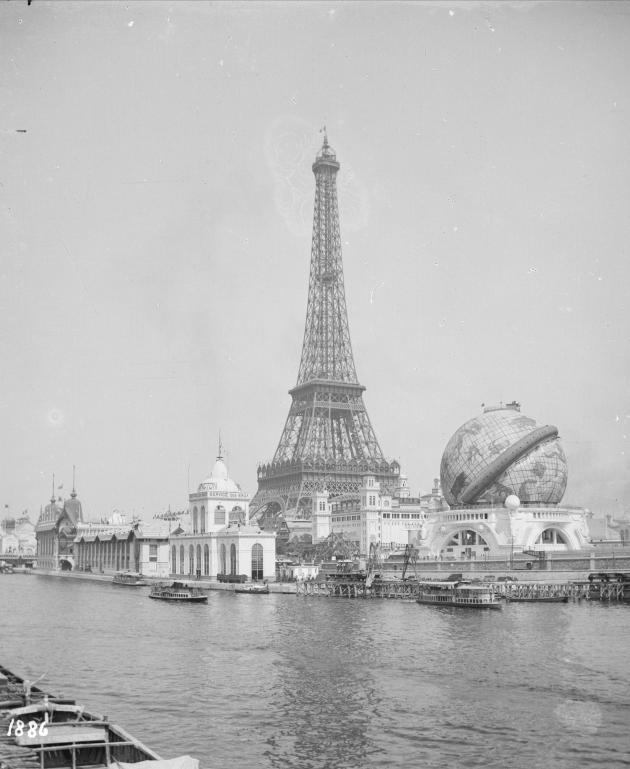
Photo: Peter Elfelt.
They worked with scalpels and chemicals and could draw out contours or blur areas. Others worked on retouching paper copies. It was laborious work and required special skills.
From Amagertorv to Paris
Richter was among the most skilled retouchers. We know this because she received a gold medal at the World Exhibition in Paris in 1900.
There is no record anywhere that she herself was in Paris, and it is probably most likely that she sent her photographs there, and she did so together with Steen, who also received a gold medal. The Archives Nationales contains an exhibition agreement signed by Steen, but unfortunately no drawings or photographs of the room where the couple exhibited have been preserved.
““Mary Steen makes a sympathetic impression. Through her modest appearance, however, one senses the strong personality that, as a self-made woman, has earned a place among the best in her profession, has been elected to the board of the Photographers' Association and is respected as a colleague.
Women's rights activist
Mary Steen was an enterprising woman. She had her own company, but she was also active as a feminist. In the magazines Kvinden og Samfundet and Hvad vi vil you can follow all the causes she was active in. From the fight for the right to vote to initiatives to renew women's wardrobes so that they could move more freely and, for example, cycle, to agitation for more women to enter the photography profession and get an education in general. As a photographer, she took many group photos, a new genre, of girls and women at educational institutions. From classic photos with rows of people to staged photos with a humorous element.
Queer women 1870-2020
Senior researcher Mette Kia Krabbe Meyer has conducted research on female photographers and same-sex relationships as part of the research project Queer Women 1870-2020, led by Professor Rikke Andreassen and funded by the Independent Research Foundation of Denmark.
Read more in Rikke Andreassen and Merete Pryds Helles De nye kvinder. Kærlighed og queers 1870-1920 (The New Women. Love and Queers 1870-1920), Politikens Forlag 2025 and Mette Kia Krabbe Meyers ”Mary Steen. A Studio of One's Own”, in Striving for Independence: Nordic Women Studio Photographers, 1860-1920 , Sigrid Lien and Mette Sandbye (ed.), De Gruyter (to be published in spring 2026).
Were they lesbians?
Richter and Steen lived and worked together, and they had a shared social life. Does this mean they had a romantic relationship?
It is difficult to say, partly because the term lesbian was not used in broader contexts at the time, and partly because there are no written sources that tell anything about their relationship. Descendants of Mary Steen say that she left some letters, but they disappeared from the family's possession at some point.
The fact that there are no written sources from Steen or Richter's hand does not mean that they did not have a romantic or erotic relationship, because it is rare that we leave behind love letters, and when it comes to same-sex relationships in the past, there have been taboos that have meant that letters have been discarded. Given this background, if you write about same-sex relationships, it is important to operate with a "space of possibility" and in any case not to use the fact that there is no evidence as proof that a relationship did not exist.
However, there are other sources than texts by Steen and Richter that can be used. Niels Jørgen Steen, who is the great-grandson of Mary Steen's brother, has stated that Steen was a lesbian. This was also the word used in the description of the play that Niels Jørgen Steen's partner, Lotte Tarp, wrote about Mary Steen in 1984. Here it says She was a lesbian and together with the author Agnes Henningsen they rebelled against the traditional female role
.
You can also read Agnes Henningsen herself, who was in the studio for a very short time as an apprentice, and understand her description of Steen as evidence of her physical interest in other women: The short-haired lady moved her mouth after me, she was so womanly interested
, (Byen erobret. s. 57) (in English: The City Conquered).
Another source that indicates that they were close is the records from the Assistens Cemetery, which state that Steen was buried together with Helga.
Whether Steen and Richter's relationship was of a romantic and erotic nature or not, we can characterise Steen and Richter as "life partners" like many of the women the couple were friends with and photographed. They were therefore part of a community that consisted of independent women who had close relationships internally. If one starts from the fact that there have always been women who had romantic relationships with each other, one can further argue that there is more evidence that they had relationships than that they did not.
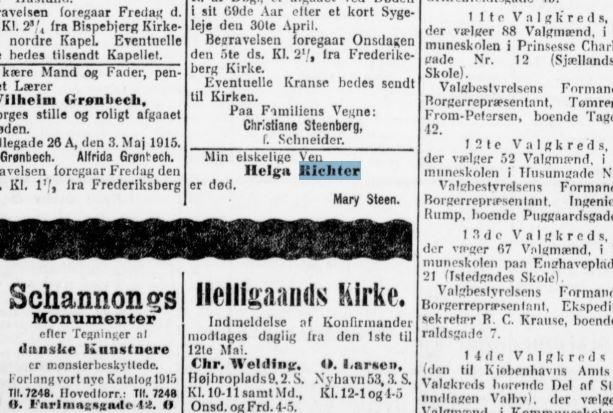
Photo: Det Kgl. Bibliotek
See more
See more photographs taken by Mary Steen in Royal Danish Library's collections.
Mary Steen is described in Lotte Tarp's play Amagertorv 4. It has just been digitised as part of the project Denmark's Dramatic DNA.
See the theme about the photographer couple Julie Laurberg and Franziska Gad.
